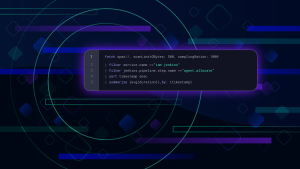The OpenTelemetry community is working hard towards a first GA release of the OpenTelemetry project. Reaching another milestone in their journey, last month the OpenTelemetry community announced the freeze and first release candidate of the tracing specification. With the arrival of this release candidate (RC), the community’s focus now shifts to providing tracing RC component releases, as well as producing a metrics specification RC. With these release candidate APIs available, instrumentation for web frameworks, storage clients, and much more can be built.
Dynatrace fully embraces OpenTelemetry
We at Dynatrace understand the importance of contributing our expertise in enterprise-grade intelligent observability to the open source community. This is why Dynatrace has a dedicated team working on OpenTelemetry that has been deeply involved since the beginning of the project, with members on both the Governance Committee and the Technical Committee.
Contributor insights: An interview with OpenTelemetry committee members
Today we want to share how Dynatrace contributes to the OpenTelemetry project. We sat together with Armin Ruech and Daniel Dyla, software engineers at Dynatrace and leaders within the OpenTelemetry community, to hear about their involvement with the second most active CNCF project.
Armin: Hi! My name is Armin Ruech, I’m a Software Engineer at Dynatrace and I started as a software developer around 3.5 years ago. I worked on providing code-level insights for Java and .NET services and applications before shifting gears and joining the OpenTelemetry community back in May 2019.
Daniel: And my name is Daniel Dyla, I’m also a Software Engineer at Dynatrace. I started 4 years ago as an intern working on the natural language processing pipeline for task automation and transitioned to the Open Source office working primarily on OpenTelemetry about a year ago.
How are you involved with the OpenTelemetry project? What are your responsibilities?
Armin: I’m a member of the OpenTelemetry Technical Committee. For my daily job, this means that I’m involved in discussing issues and reviewing pull requests for the OpenTelemetry cross-language specification. I also participate in the weekly OpenTelemetry specification meeting as well as the OpenTelemetry maintainer’s sync. Currently, we as a community are working to finalize the spec for the first RC/GA release and decide which issues are immediately actionable and which can be postponed to the next revision. Apart from that, I also keep an eye on some of our Gitter channels to help other contributors and users if they have any problems and encourage them to propose their improvement ideas to the specification repository.
Daniel: I’m one of the maintainers of the OpenTelemetry JavaScript (JS) Special Interest Group (SIG), a contributor to the Specification, and member of the Governance Committee. As a maintainer of the JS SIG, it’s my job to oversee contributions to the JS API and SDK implementations and ensure they are compliant with the specification, well tested, and high quality. This entails prioritizing the roadmap, conducting code reviews, and submitting code contributions.
Other Dynatrace team members who frequently contribute to the OpenTelemetry project are Mario Jonke (focusing on OpenTelemetry Python), Christian Neumueller (contributing as an approver to the tracing specification), and Giovanni Liva (contributing to and approving the OpenTelemetry Java implementation).
Can you please share a concrete example of one of your contributions to the OpenTelemetry project?
Armin: Dynatrace contributes distributed tracing knowledge, which was gained over years of experience via semantic conventions to ensure the highest quality of OpenTelemetry data. One example of how Dynatrace helps ensure enterprise readiness for OpenTelemetry is “named tracers and meters.” These allow for fine-grained configuration of sensors to identify and counter problematic instrumentation. Named tracers not only provide enabling or disabling of specific instrumentation, they also provide additional semantics on the instrumentation source to users.
Daniel: As a maintainer of the OpenTelemetry JS SIG, I have contributed many features to the JS SDK and API including core features like the API structure, context utilities, named tracers and meters, and fast ID generation functions. I have also contributed instrumentations for modules like MySQL, and many smaller fixes and improvements to ensure that the JS API and SDK implementations are compliant with the specification.
How will Dynatrace continue to contribute to the OpenTelemetry project?
Armin: I’ll continue to work on the OpenTelemetry specification to ensure that it is suitable for both customers and vendors. Our goal as a community is to ensure OpenTelemetry is recognized as the Open Source standard for observability and distributed tracing.
Daniel: I’m really excited about the future of OpenTelemetry at Dynatrace. With OpenTelemetry reaching GA, we’ll see fewer major changes to the API, but we will also see many more users and interesting and challenging use cases which we’ll be happy to address. I’m excited to continue working with specification maintainers like Armin to help users make the most of OpenTelemetry.
What is your favorite thing about working at Dynatrace?
Armin: I’ve worked in companies from 10 employees up to hundreds of thousands. What I like about Dynatrace is that we have a large enough size to be one of the market leaders in our industry, yet we are small enough that each employee can produce impact and make decisions on their own. For instance, it’s great that I can positively impact the Open Source community. There is a wide variety of aspects and interesting problems to solve in building such a comprehensive platform as Dynatrace, so there’s a new challenge every day. Our customers’ environments are constantly evolving and we always need to stay up to date with cutting edge technology to be able to meet their needs in allowing them to observe and manage their systems at massive scale. I enjoy being part of a team of experts in different areas. This allows me to learn from them while solving customers’ problems every day. Working closely with other industry leaders and partners like Amazon, Google, and Microsoft as part of my involvement in OpenTelemetry is exciting, too.
Daniel: I love the diverse set of projects that I have worked on at Dynatrace. From natural language processing, to collaboration software, plugins for Jira cloud, CloudFormation providers, and now the OpenTelemetry project. Such a wide range of opportunities means I’m constantly challenged, constantly learning, and never bored.
Where can people go to find more information?
If you’re interested in learning more about OpenTelemetry or joining the community, a good place to start is the OpenTelemetry GitHub repository. To get involved with Armin, Daniel and the community you can either join the relevant weekly SIG meetings or reach out to them on Gitter.
Stay tuned, there’s more to come!
Dynatrace isn’t only heavily involved in shaping the OpenTelemetry standard, we are also committed to integrating telemetry data that’s collected via open standards like OpenTelemetry or OpenTracing as an additional data source within Dynatrace. For instance, we are working on OpenTelemetry metrics exporters for popular programming languages which will automatically tap into metrics exposed via OpenTelemetry instrumentation. These OpenTelemetry custom metrics will be picked up by the Dynatrace analytics engine, ensuring automated and intelligent observability. Further, Dynatrace will soon capture OpenTelemetry and OpenTracing trace data and provide extended end-to-end traceability for pre-instrumented third-party libraries that expose OpenTelemetry and OpenTracing telemetry data.




Looking for answers?
Start a new discussion or ask for help in our Q&A forum.
Go to forum